Today, the weather is frosty with a few more inches of snow to add to the melting pile in my garden. Thus, it is the perfect time to think about June, when the robins and cardinals are singing high above and the tulip tree’s flowers are morphing from chlorophyll-rich green to yellow, with bees foraging in the blossoms. Bees like the big carpenter bee here (Xylocopa virginica).
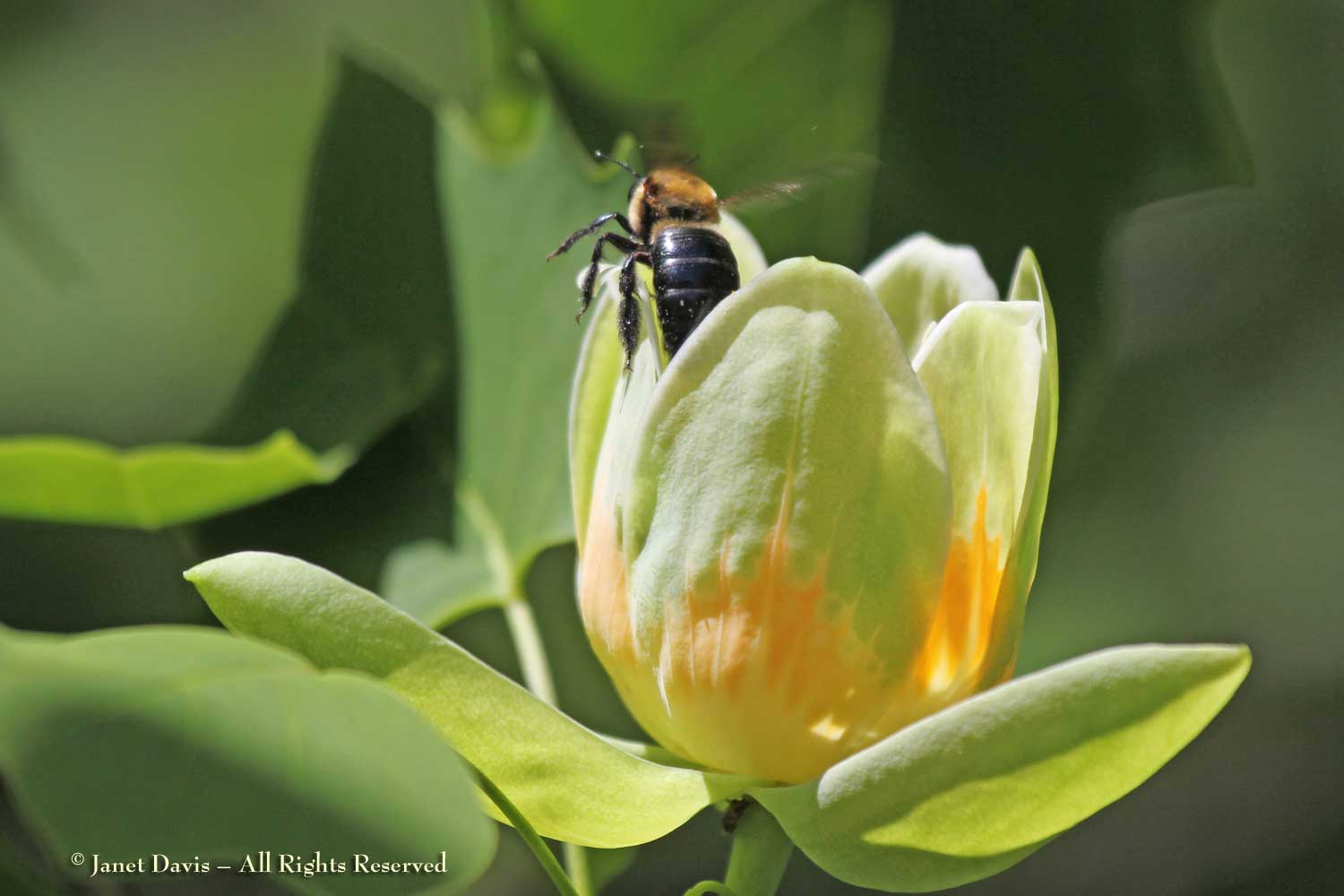
I filmed that carpenter bee foraging in the flowers on June 9, 2017. Listen to that joyous avian chorus!
All kinds of bees enjoy the nectar-rich flowers of tuliptree…. or do you prefer “tulip poplar”? Since it’s neither a tulip nor a poplar, let’s go with the Latin, Liriodendron tulipifera, one of our most beautiful and stately native North American trees. This is Augochlora pura, the pure-green sweat bee.
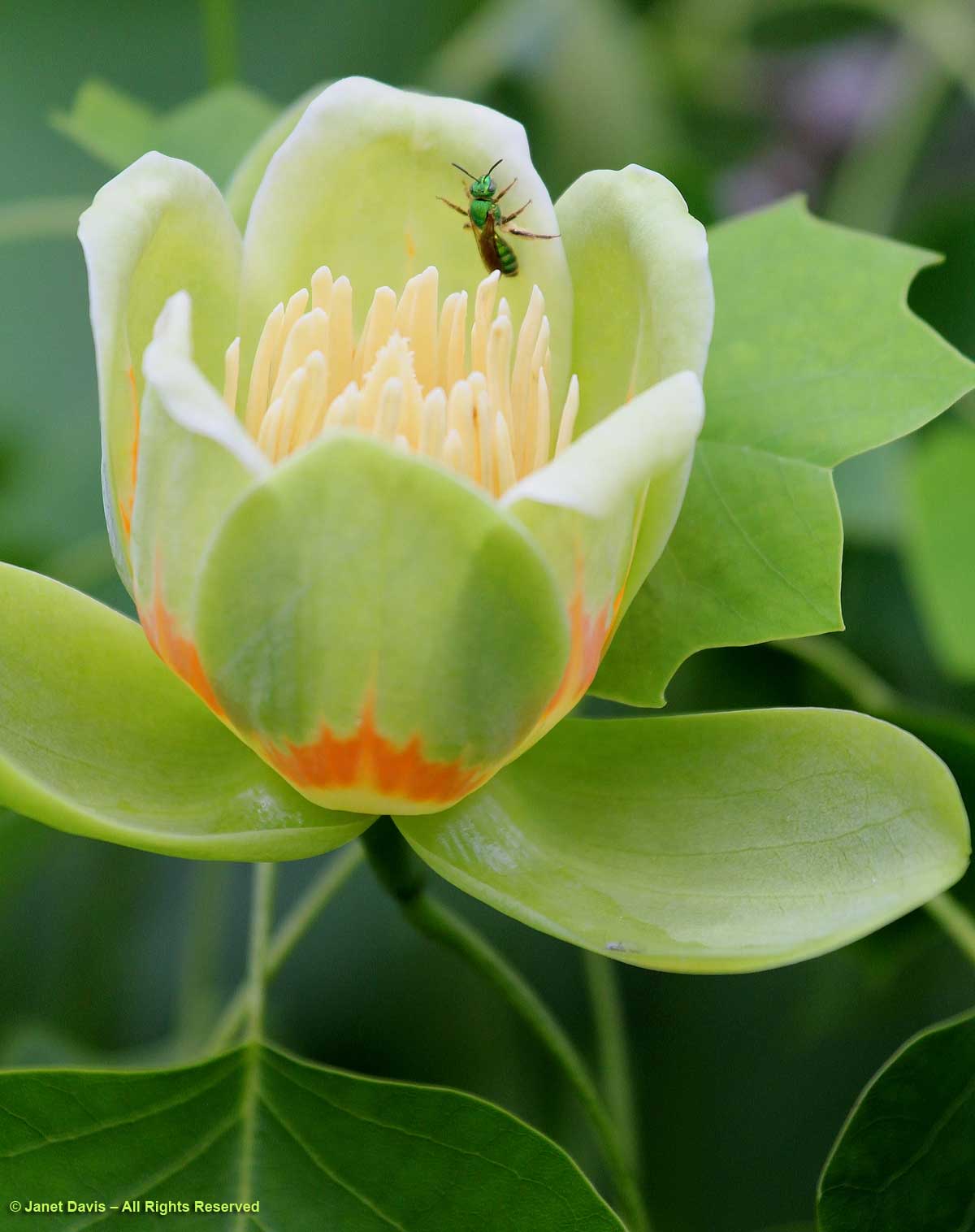
When Linnaeus gave this North American native tree its Latin binomial name in his 1753 Species Plantarum, he combined two Greek words for the genus: leiriŏn, meaning “lily”, and dӗndron, meaning “tree”. Then he added the specific epithet tulipifera, meaning “tulip-bearing” or “tulip-like”. So, a “lily tree” with “tulip-like” flowers – the poor thing, such a derivative identity! In fact, it is classed as Magnoliaceae where its height and size have earned its title as “the king of the Magnolia family”. You can see those magnolia traits in this close-up showing the spiral arrangement of the stamens and pistils on a conical receptacle. Unlike more recently-evolved angiosperms with distinctive sepals and petals, tuliptree flowers have whorled parts called tepals.
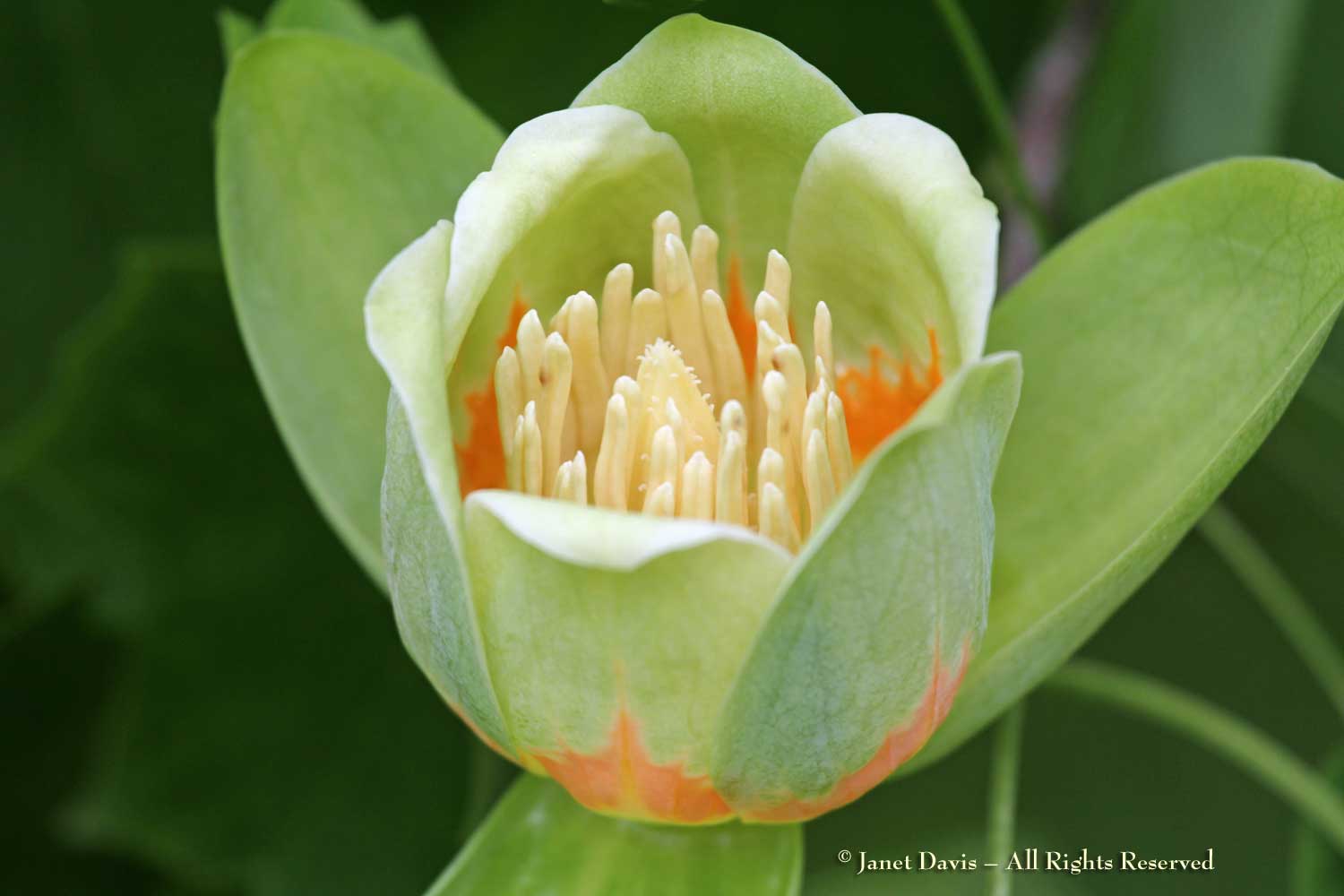
It is the tallest tree of the eastern forests of North America, with one specimen in a secret location in the Smokey Mountains of North Carolina believed to hold the record at 190 feet (58 m). Though I haven’t seen the tree in the wild, its native range does extend into the Carolinian forests on the north shore of Lake Erie and southwest shore of Lake Huron in Ontario. But I did focus my lens high up into the flowering canopy of the 160-year old specimen at Princeton University, below, the tallest tree on campus at 135 feet (41 m) with a 16-foot (4.8 m) trunk circumference. As is typical for mature specimens, this tree had lost its lower branches.
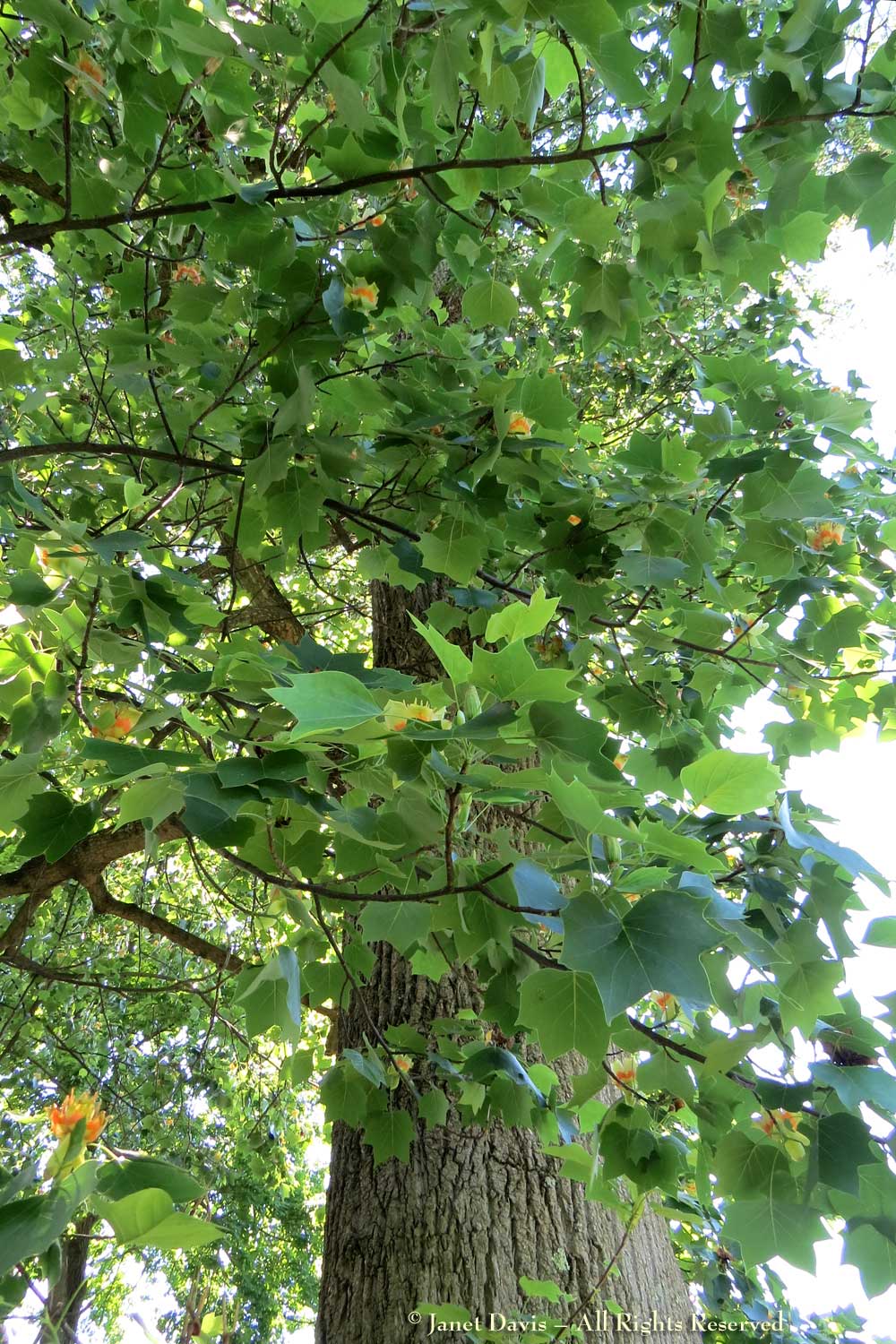
When I was at New York Botanical Garden in spring 2012, I loved walking through the tuliptree allée there under the beautiful canopy of the trees planted more than a century ago according to the design of architect Calvert Vaux, who also worked on the landscape plan for Central Park with Frederick Law Olmsted.
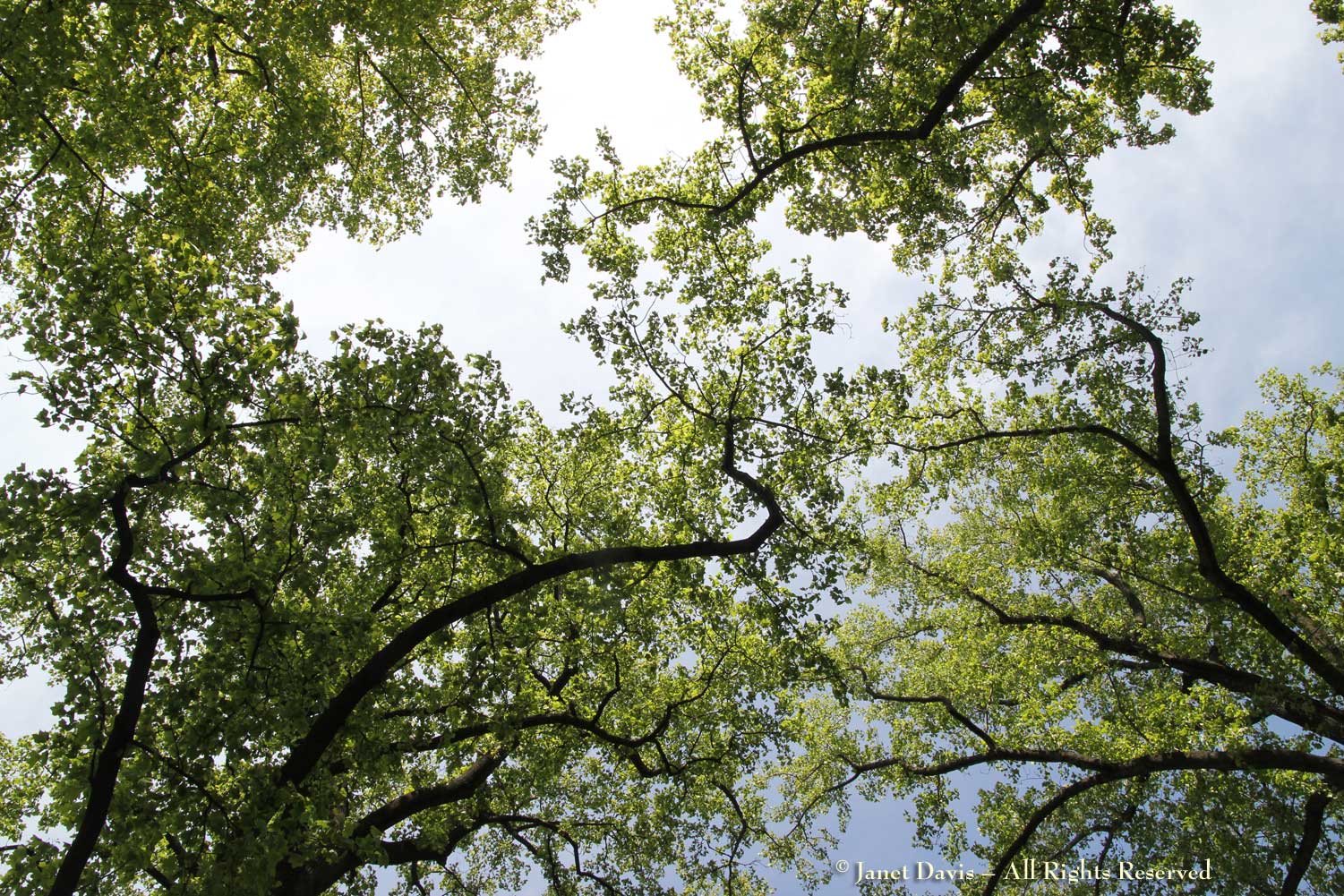
In Toronto, the best specimens of tuliptree are in Mount Pleasant Cemetery, with some young enough to offer their flowering branches at a low enough level for me to observe them. A beautiful tree near the gates at Yonge Street features variegated leaves; in commerce this tree is called ‘Majestic Beauty’.
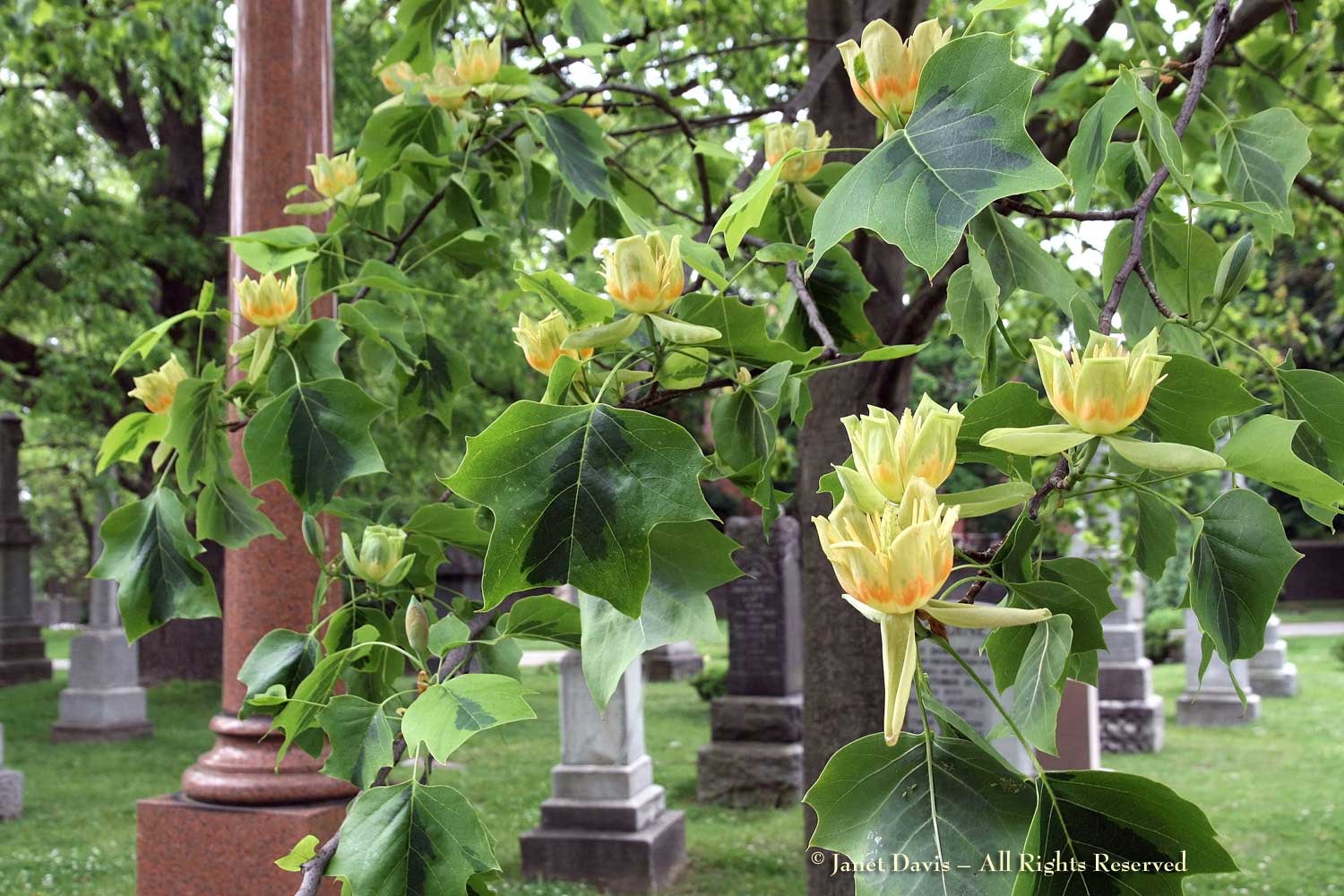
Research has shown that Liriodendron tulipifera it is one of the most nectar-rich species of trees, by a factor of hundreds of times more nectar volume than other species. The nectary area on the internal surface of the tepals, a special epidermis tissue called “nectarostomata”, is emblazoned with yellow and orange markings to attract pollinators. Colourful floral markings like this, aka “nectar guides”, are an evolutionary adaptation to act as a signal to insects and improve the chances of pollination. Scientists have shown that after a few days of secretion, so much protein-rich nectar is produced that it flows down into the base of the flower. Tuliptree is also a food plant for the caterpillars of the eastern tiger swallowtail butterfly (Papilio glaucus).
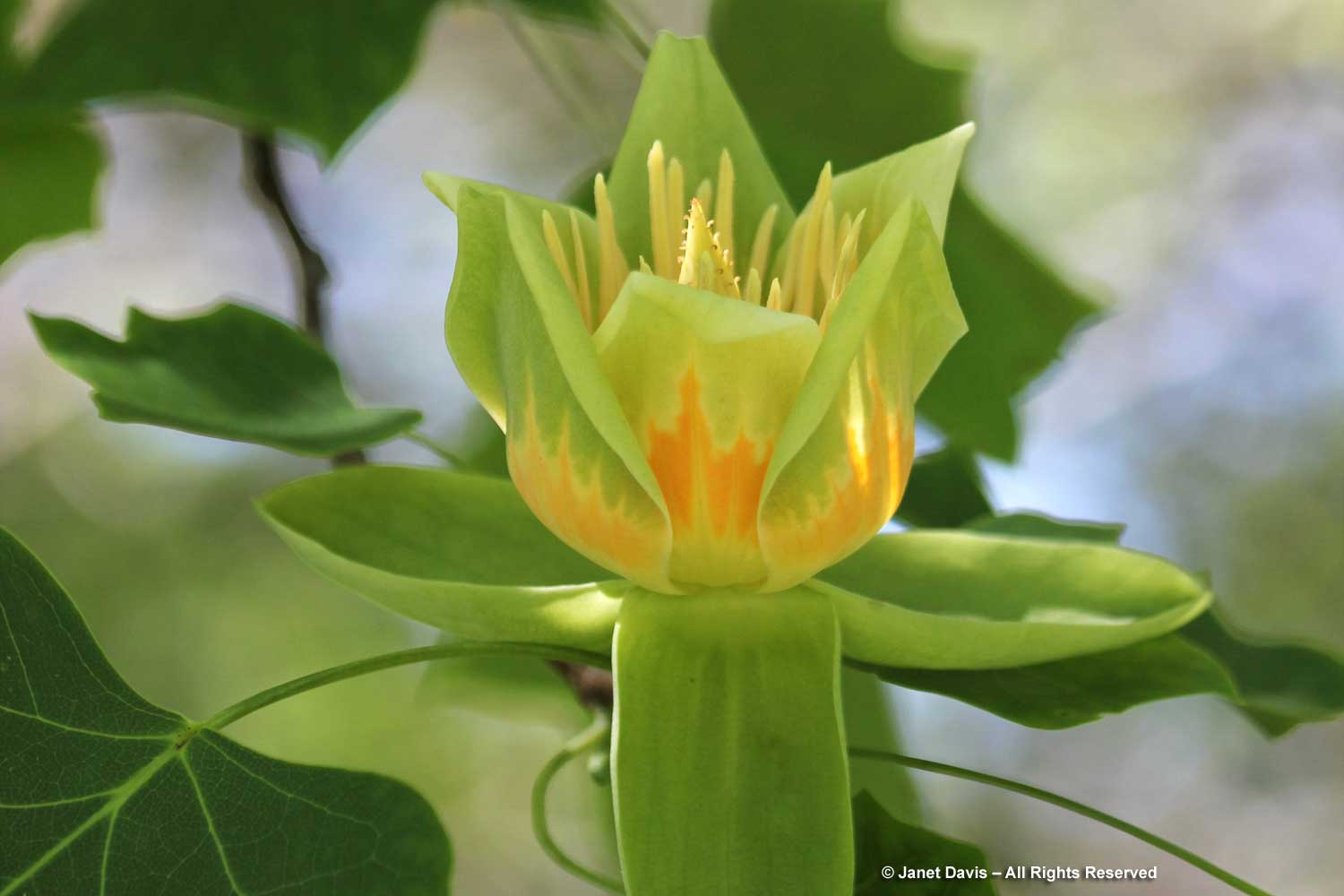
Some years ago I wrote a story on urban beekeeping for Organic Gardening magazine, which has since been shut down. One of the beekeepers I interviewed, Linda Tillmann, seen in the story spread below, lives in Atlanta where the tree is a common forest species. As she told me: “In Atlanta bee season is limited by the tulip poplar bloom. Generally by the beginning of June our nectar flow is over, though bees also take nectar from holly, blackberry and others.”
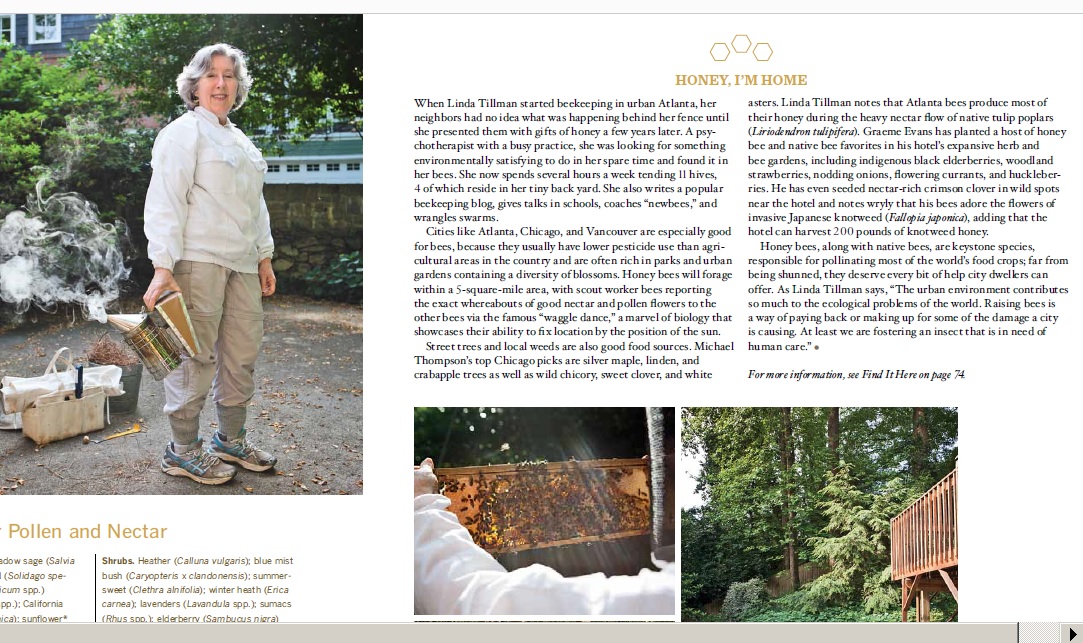
As the inflorescence ages and the central, spindle-shaped pistil elongates, the similarity to magnolias becomes even more obvious.
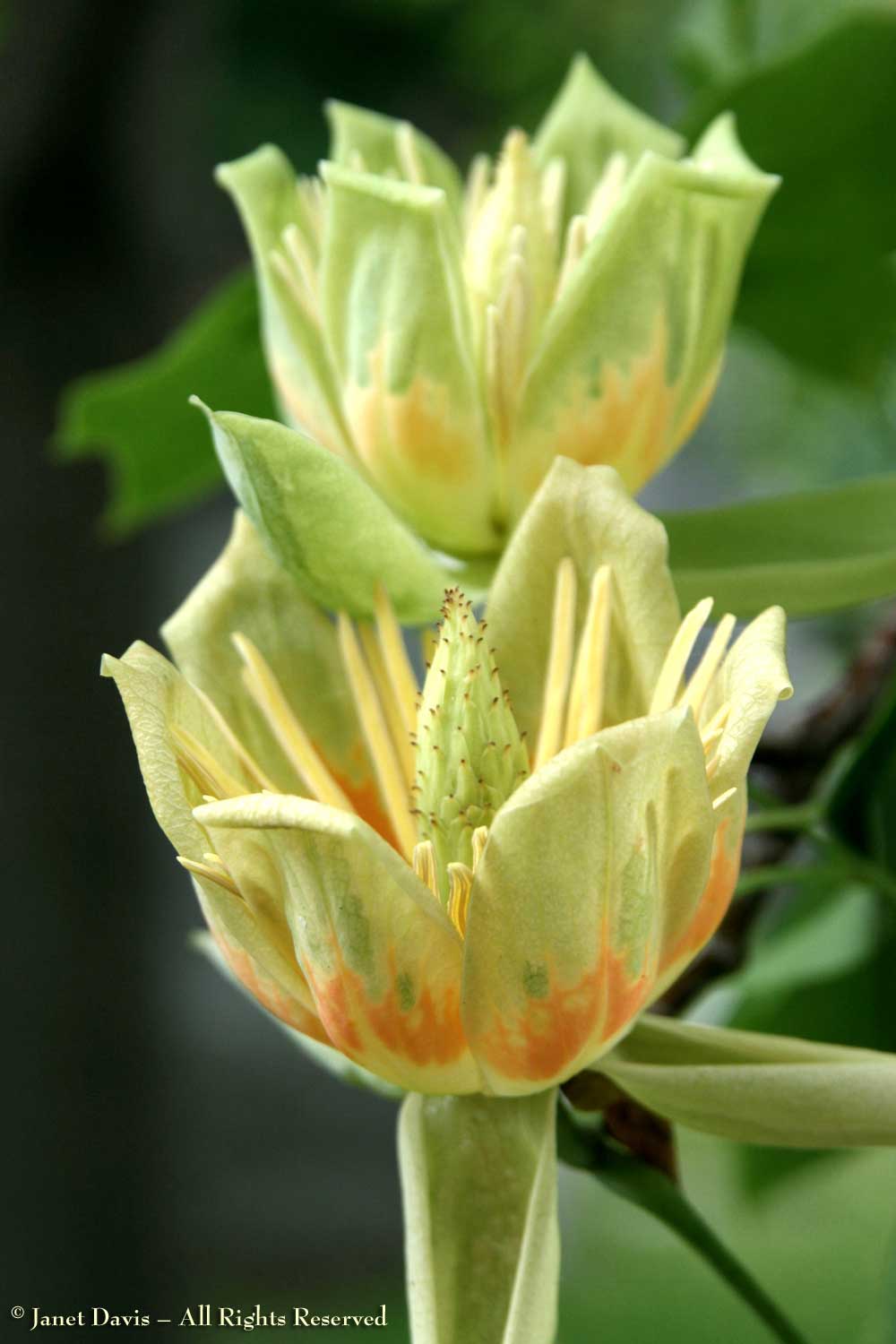
The leaves of tuliptree are unusually shaped – indeed, a little like the flowers of a stout tulip. Typically, they have four lobes, occasionally six. Lustrous and little bothered by insect predation or disease, they were praised by one of my favourite naturalists, Donald Culross Peattie in his book A Natural History of Trees of Eastern and Central North America. He wrote that there was something joyous :“in the fresh green of its leaves, which, being more or less pendulous on long slender stalks, are forever turning and rustling in the slightest breeze; this gives the tree an air of liveliness lightening its grandeur.”
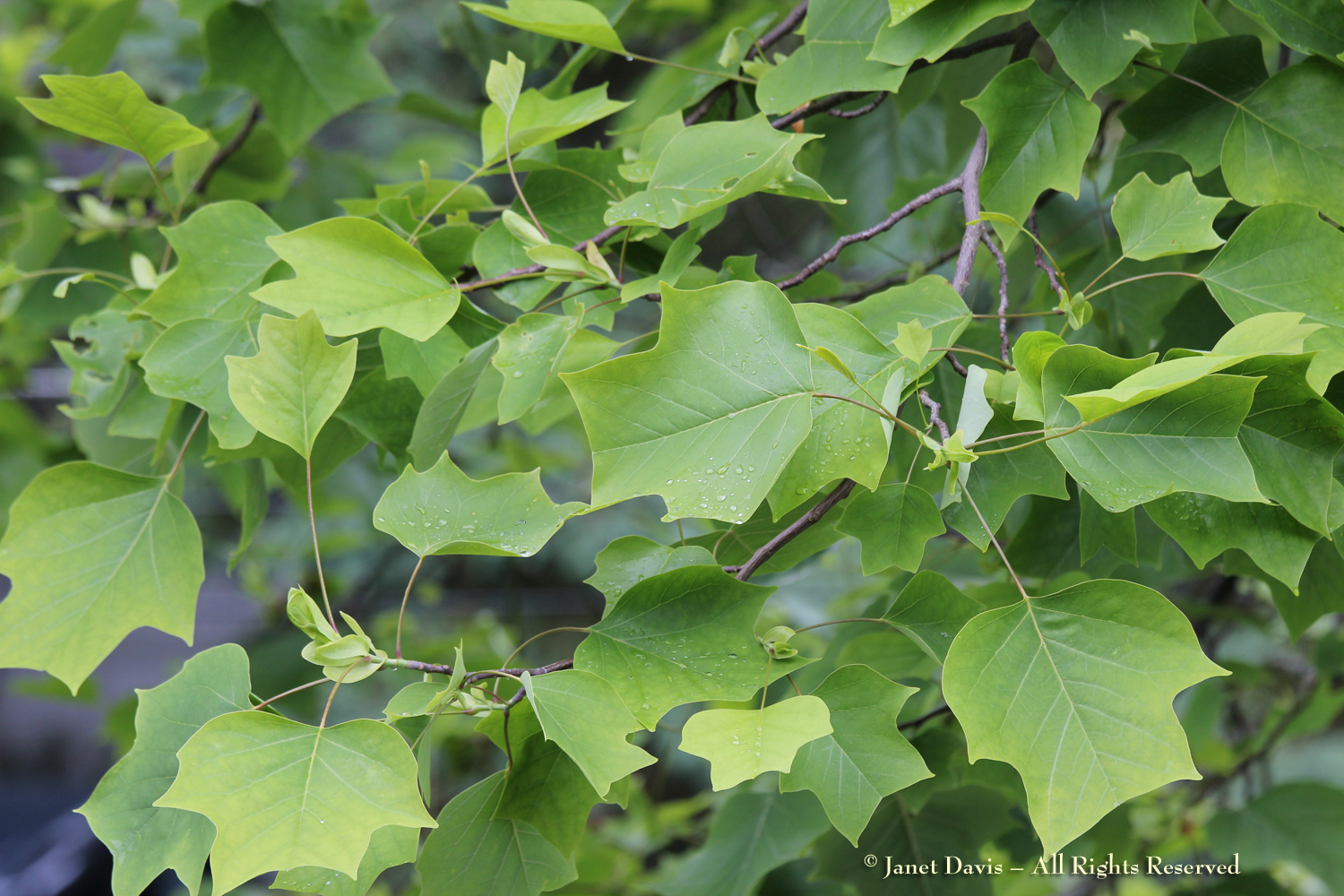
In autumn, depending on conditions in the summer, tuliptree leaves turn gold, apricot or bronze….
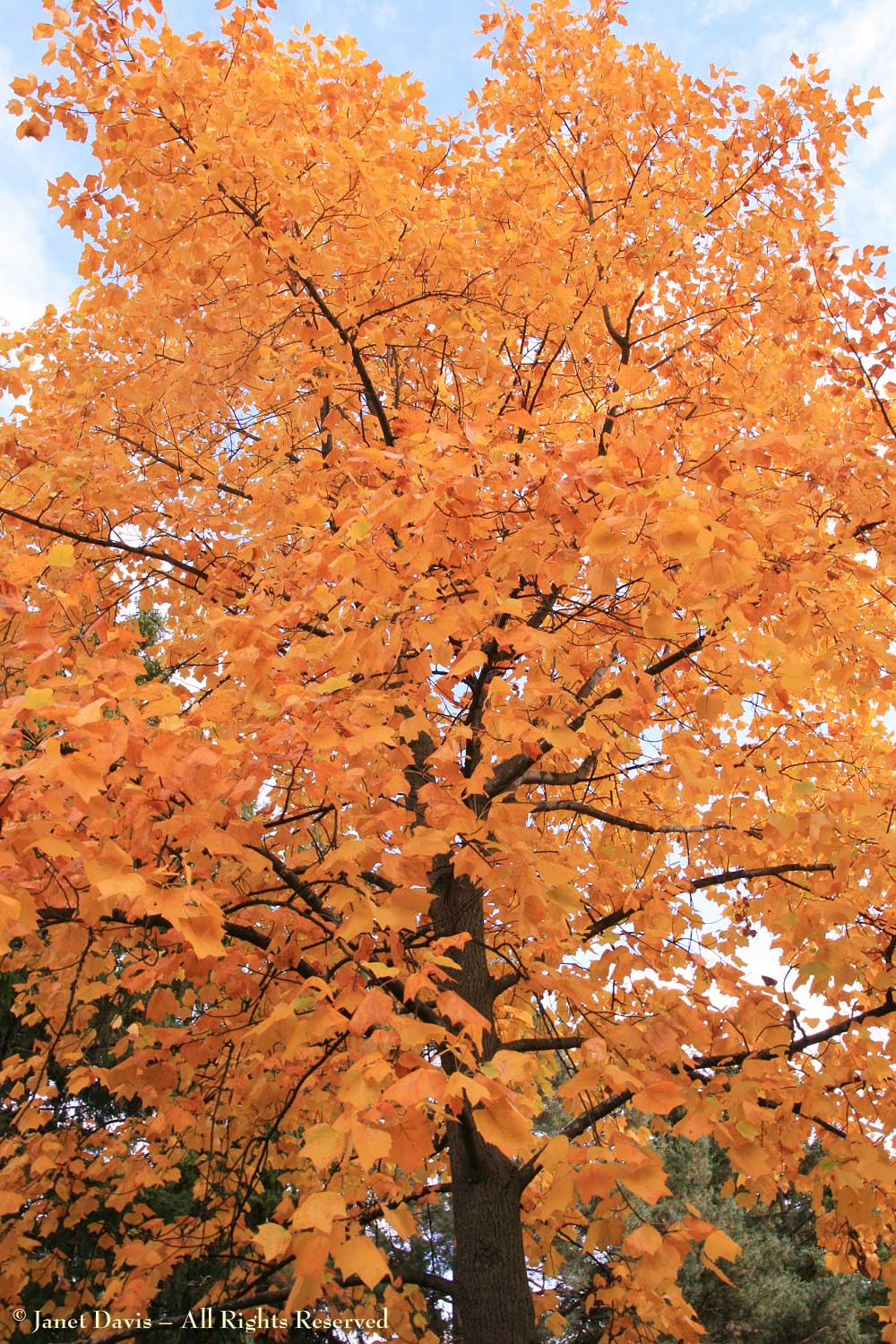
…..and sometimes a mix of hues.
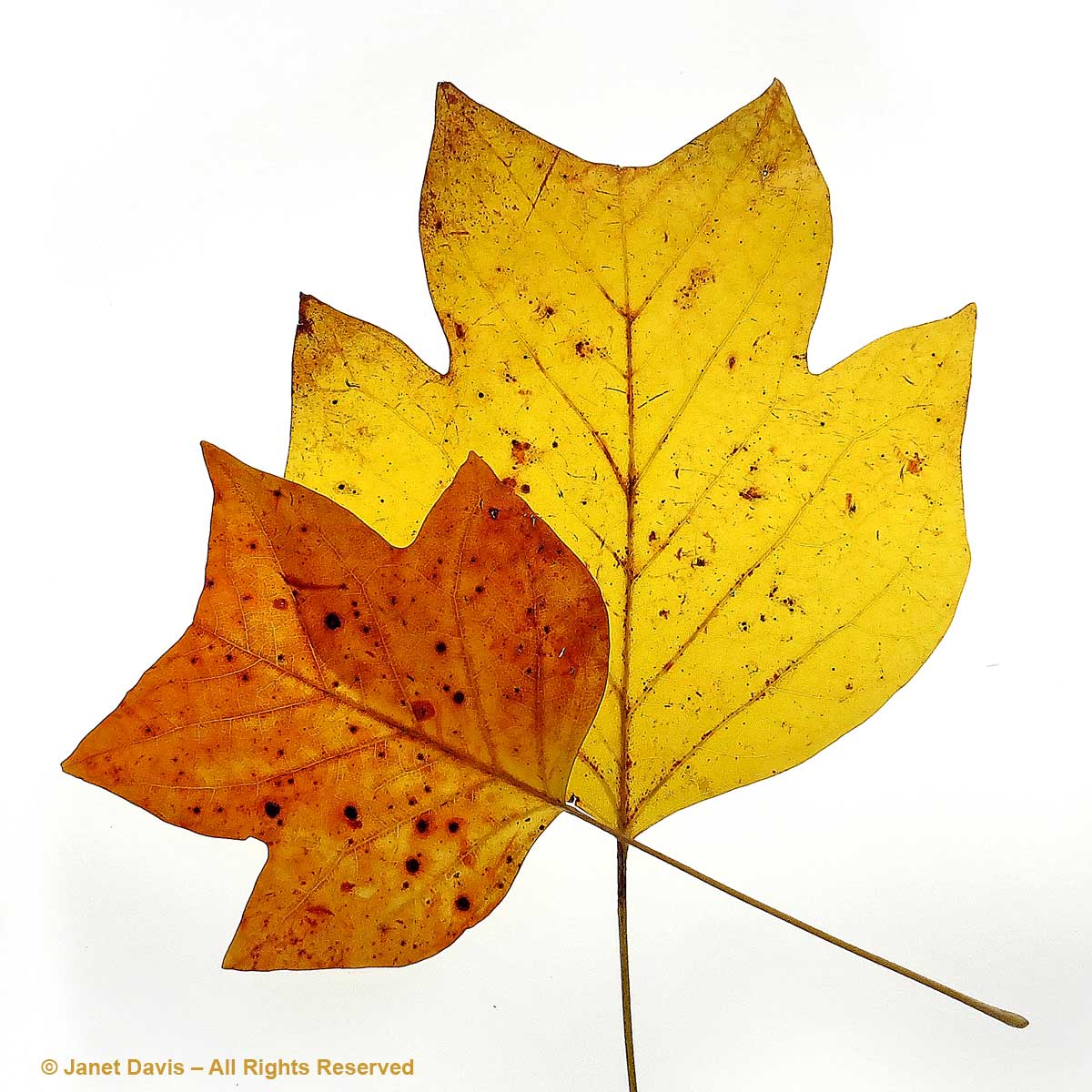
In early winter, you might see the aggregate winged fruits as they fall away from the central stalk. The seeds are eaten by birds and small animals. I will give my last words to Donald Peattie. “Even in winter the tree is still not unadorned, for the axis of the cone remains, candelabrum fashion, erect on the bare twig when all the seeds have fallen. No wonder that in the gardens of France and England this is one of the most popular of all American species.”
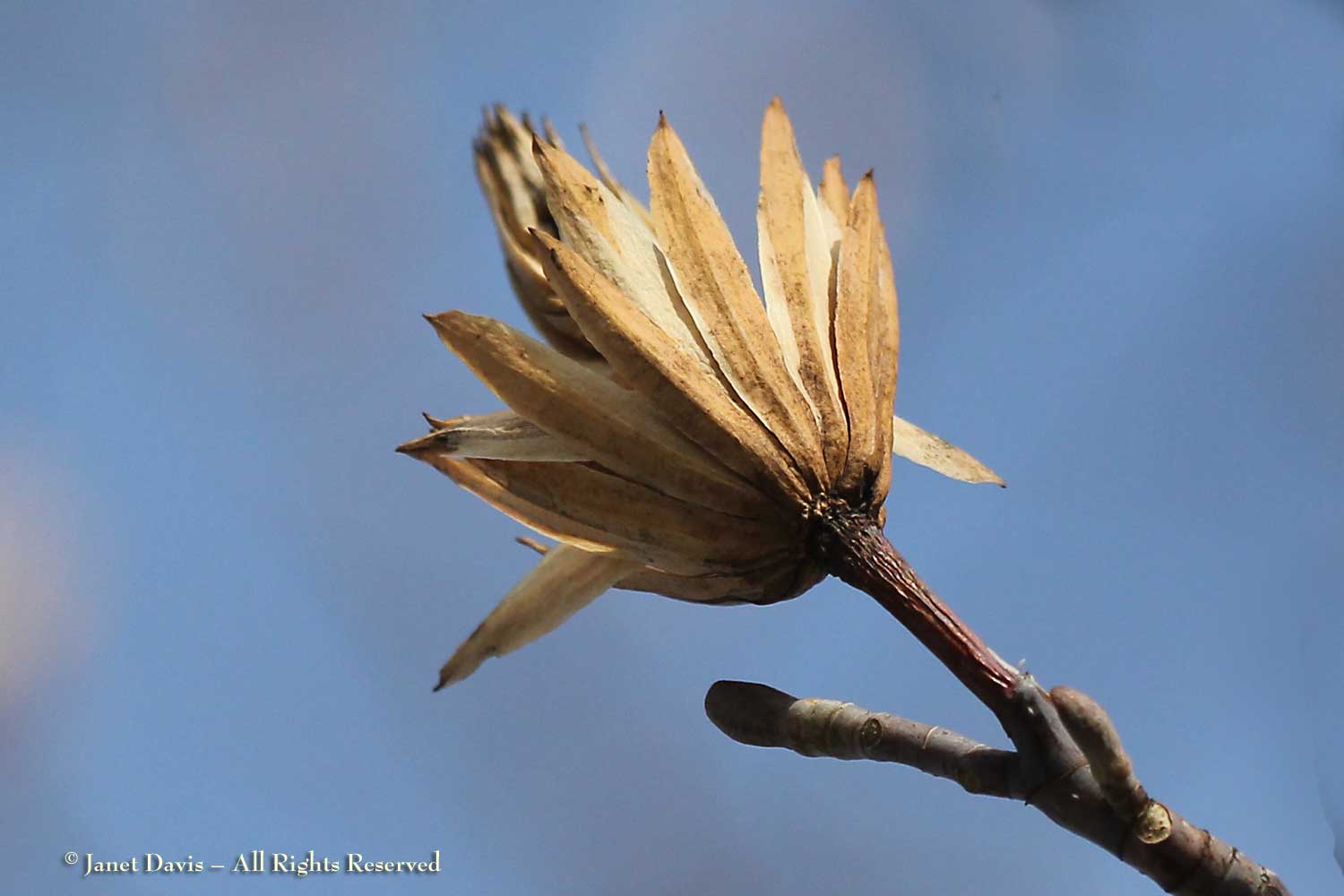

A lovely tree but hard to source if one is not wholesale
And hardy to at least 4a. With so many nurseries closing it has become harder for gardeners to source Native plants, shrubs and especially trees.
That is bizarre Andrew. Such an iconic native tree. It should be widely available!